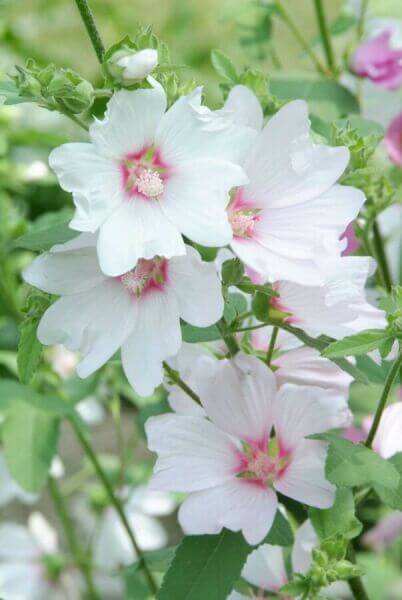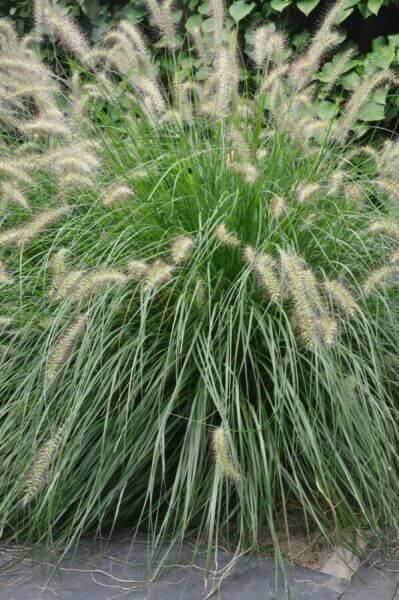Best Hedging Plants For Cottage Boundaries
Best Hedging Plants For Cottage Boundaries
Blog Article
Drought-tolerant Hedging Plants
Improve your garden's allure with lavish hedge varieties such as Yew (Taxus), Thuja, Laurel, Photinia, and Bamboo, commemorated for their structural integrity and ecological advantages.
Yew and Thuja supply evergreen protection and winter season durability, while Laurel offers rapid growth and broad, fragrant leaves.
Photinia includes seasonal charm with its lively red foliage, and Bamboo lends a low-maintenance, peaceful atmosphere.
These hedges improve air quality, minimize sound, and create tranquil, private areas.
Proper planting, spacing, and maintenance make sure vigorous growth and eco-friendly consistency.
Explore how these rich ranges can raise your garden's beauty and wellness.
Secret Takeaways
Change Your Garden With Lush Hedge Ranges
- Select Yew for its dense, evergreen development and unrivaled longevity.
- Go with Laurel for its quick growth and broad leaves, making sure fast personal privacy.
- Choose Photinia for its vibrant seasonal foliage, which turns a striking dark red.
- Use Bamboo for a low-maintenance, winter-hardy hedge with visual appeal.
- Area plants 2-3 per meter and prune regularly for optimum development and health.
Popular Hedge Plants
When changing a garden with lavish hedge varieties, it's necessary to think about popular hedge plants such as Yew, Thuja, Laurel, and Photinia due to their special attributes and advantages.
Yew (Taxus) is extremely respected for its durability and dense, green development, making it a prime option for sustaining landscapes.
Thuja is noted for its evergreen foliage and robust winter season resilience.
Photinia adds seasonal vibrancy with red leaves that darken over time, creating vibrant visual appeal.
Laurel uses quick development and fragrant, broad leaves, ideal for quick personal privacy.
Additionally, Bamboo is an outstanding choice for ambiance, offering a low-maintenance, winter-hardy option that boosts the garden's visual with its sophisticated, swaying walking canes.
These choices cater to a range of horticultural requirements and preferences.
Benefits of Garden Hedges
Garden hedges use a plethora of benefits, making them an important addition to any landscape. These natural barriers are economical to carry out and supply substantial wind protection, boosting air flow and adding to sound reduction. The thick foliage of hedges like Thuja and Beech ensures privacy by blocking visibility, producing a secluded and peaceful environment.
Hedges also play a vital role in microclimate policy, offering a stable environment that promotes plant development and decreases temperature variations. Their elaborate leaf structures filter pollutants, improving air quality and contributing to a much healthier garden ecosystem.
Furthermore, hedges master noise reduction, taking in and deflecting acoustic waves to lower ambient sound levels. This dual performance of supplying both acoustic and visual personal privacy enhances the total harmony and aesthetic appeal of any garden.
Planting and Maintenance Tips
For an effective hedge, precise preparation of the planting location is essential. Guarantee the soil has appropriate pH and drainage to support strong root advancement.
Area the plants appropriately for the picked species. Water the hedge often throughout its preliminary growth phase, adjusting as needed with seasonal modifications.
Carry out a organized bug control and illness avoidance strategy, using chemical or natural treatments when necessary. Routinely examine for aphids, termites, and fungal infections.
Apply mulch to maintain moisture and suppress weeds. Seasonal pruning promotes dense growth and air circulation, vital for plant health.
Following these standards will assist you cultivate a vibrant, properly maintained hedge that enhances the charm of your garden.
Spacing and Trimming Standards
Spacing and Cutting Standards
Proper spacing and trimming are essential for cultivating healthy, visually appealing hedges. Appropriate spacing ensures each plant receives enough nutrients, light, and airflow.
Follow these guidelines for optimum hedge upkeep:
- Spacing: Position hedge plants 2-3 plants per meter to encourage robust growth.
- Pruning Techniques: Routine pruning is essential for maintaining desired hedge height and shape. Cut new development in summer season and cut back older wood throughout winter.
- Seasonal Care: Change cutting techniques and schedules according to seasonal requirements to ensure plant health.
- Hedge Height: Regularly screen and trim to preserve the wanted hedge height and attain consistent visual appeals.
Sticking to these steps will ensure your hedge flourishes, improving both the appeal and functionality of your garden.
Selecting the Right Hedge
Selecting the Right Hedge
Choosing the suitable hedge involves examining aspects such as mature height, foliage density, and ecological strength. Successful hedge plant selection needs understanding each species' development attributes and site-specific adaptability.
For instance, Yew (Taxus) uses exceptional durability and dense growth, while Thuja is significant for its winter season resilience. Additionally, considering maintenance requirements is crucial; fast-growing types like Laurel or Privet need regular cutting, whereas low-maintenance choices like Bamboo or Ivy may be more effective for those looking for very little upkeep.
Ecological aspects such as soil type, light availability, and moisture conditions must also direct the choice process. This mindful method guarantees the chosen hedges will grow, offering both practical and aesthetic advantages to the garden landscape.
Delivery and Planting Guidance
To ensure your hedge plants grow, they should be provided by specialized couriers and planted promptly upon arrival.
Follow these important actions for effective planting:
- Soil Preparation: Enrich the soil with natural matter to improve drain and nutrient content.
- Planting Depth: Produce a trench twice the width and equal to the depth of the root ball.
- Watering Techniques: Water completely after planting, keeping the soil consistently moist however not saturated.
- Mulching: Apply a layer of mulch to maintain wetness and suppress weeds.
Customer Assistance and Service
Given the essential function of timely assistance in horticultural pursuits, our consumer assistance group is available six days a week through telephone, e-mail, and social media to provide expert guidance and promptly deal with any issues. Their commitment to fast response times makes sure customer fulfillment by dealing with questions associated with plant health, optimum planting techniques, and maintenance schedules.

Reaction Time
Within 24 hours
6 days a week
Social network
This extensive support group, reinforced by an excellent 9.3/ 10 consumer ranking, highlights our commitment to enhancing the gardening experience for every customer.
Regularly Asked Questions
The Length Of Time Does It Take for Hedge Plants to Establish?
Hedge plants typically require one to three years to become fully developed, with the exact period differing by types and growing conditions.
Efficient care during this critical period is important for robust development. Consistent watering, alert weed control, and suitable fertilizer application are essential in promoting strong root development.
For instance, fast-growing species like Laurel might establish more rapidly, while slower-growing ranges such as Yew might take longer. Thorough maintenance speeds up the establishment procedure, leading to healthy and thick hedges.
What Are the very best Hedge Plants for Privacy?
The concern of the best hedge plants for privacy includes evaluating evergreen and deciduous choices.
Evergreen hedges like Thuja, Laurel, and Cypress supply year-round coverage, guaranteeing continuous personal privacy.
In contrast, deciduous hedges such as Beech use seasonal privacy, shedding leaves in chillier months.
Secret upkeep tips for personal privacy hedges consist of routine trimming, fertilizing in spring, and appropriate spacing-- usually 2 to 3 plants per meter.
In addition, consistent watering and diligent weed elimination are vital for promoting healthy, dense development.
Can Hedge Plants Bring In Wildlife to My Garden?
Yes, hedge plants can bring in wildlife to your garden by supplying necessary advantages more info like shelter, food, and nesting websites, thus improving local biodiversity. Yew, holly, and laurel are exceptional for bring in birds, while ivy supports a range of bugs.
Nevertheless, it's essential to keep in mind that there are some disadvantages, such as increased maintenance to handle insects and regular upkeep. Carefully picking and keeping hedge ranges can help balance these benefits and drawbacks, ultimately fostering a vibrant and sustainable environment in your garden.
Exist Any Blooming Hedge Plants Available?
Yes, there are flowering hedge plants available that can boost the charm of your garden.
For instance, Elaeagnus, also called Olive Willow, produces aromatic white flowers in the fall, including a touch of elegance.
Photinia, another popular option, showcases dynamic red leaves that mature into an abundant green, creating a vibrant visual impact throughout the seasons.
To ensure these plants grow, it's vital to practice appropriate pruning techniques and seasonal upkeep, such as trimming brand-new growth in the summer season and cutting back in the winter.
These steps will help keep the health and aesthetic appeal of your blooming hedges.
How Do I Avoid Pests in My Hedge Plants?
To avoid pests in hedge plants, utilize natural pest control techniques and maintain appropriate hedge care. Present useful pests like ladybugs, which take advantage of damaging insects, to develop a balanced community.
Regularly examine your hedges for indications of invasion and promptly eliminate any afflicted parts to avoid the spread. Ensure the health of your hedges by using well balanced fertilizers and providing sufficient water.
Make use of mulching to retain soil moisture and correct spacing to reduce plant stress and promote robust development. These practices jointly help in reducing bug concerns and maintaining a healthy hedge.
Conclusion
In essence, selecting the ideal hedge ranges such as Yew, Thuja, and Laurel can change any garden into a tranquil haven. These plants offer year-round plant, boost visual appeal, and deal practical benefits like noise reduction and wind protection.
Correct planting techniques, accurate spacing, consistent watering, and seasonal trimming are crucial for ideal development.
Dependable delivery services and expert client support guarantee a seamless experience from purchase to planting, making it simpler than ever to elevate your outdoor area.
Garden hedges use a multitude of benefits, making them a valuable addition to any landscape. These natural barriers are affordable to implement and provide significant wind defense, boosting air blood circulation and contributing to sound reduction. The dense foliage of hedges like Thuja and Beech ensures personal privacy by blocking exposure, creating a remote and peaceful environment.

Pruning Techniques: Regular pruning is necessary for maintaining desired hedge height and shape. Trim brand-new development in summer season and cut back older wood during winter.
Report this page